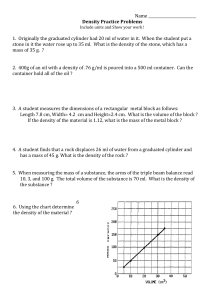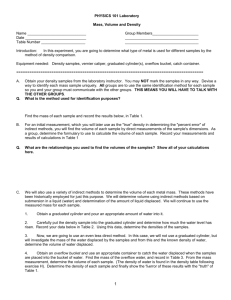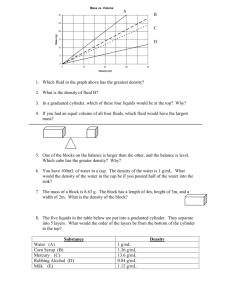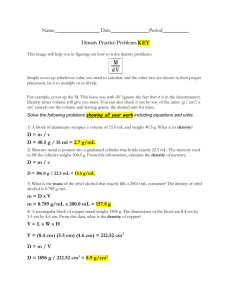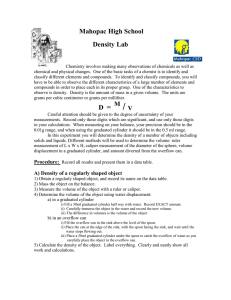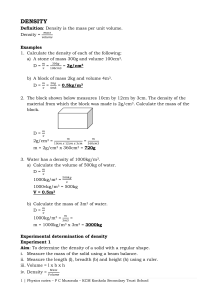Measurement - Garbally Science
advertisement
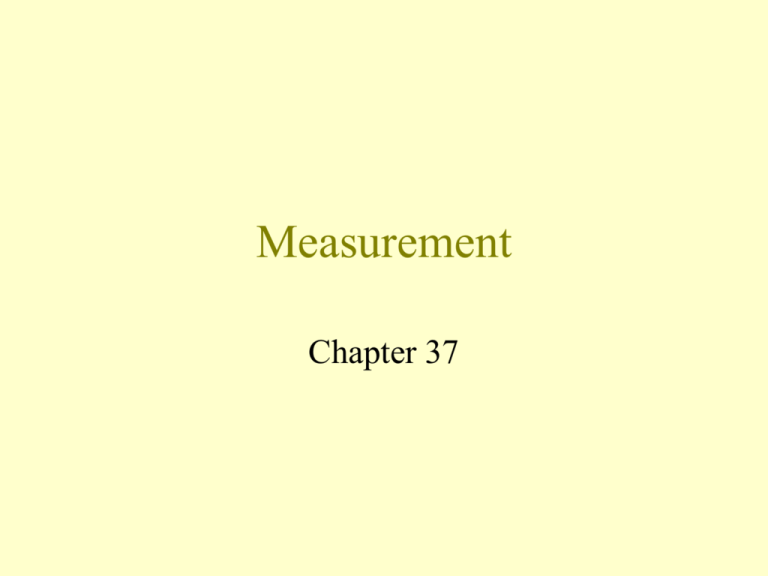
Measurement Chapter 37 Length-- Measured in cm, m, km. • Use a meter stick or a ruler to measure the length of a straight line. • An opisometer can be used to measure the length of a curved line • A Vernier callipers can be used to measure the internal and external diameters of cylinders. opisometer Trundle wheel Area—measured in 2 cm , 2 m, • The area of a rectangle = length by breadth. • Area of circle = π r2. To find the area of an irregular shape—use graph paper. Volume—measured in 3 cm , 3 m. • The volume of an object is the amount of space it takes up. • The volume of a rectangular block = (Length x Breadth x Height) Volume of a Liquid • The volume of a liquid is found by pouring it into a measuring (graduated) cylinder. Volume of a small object • The graduated cylinder can also be used to measure the volume of an object. If you place it in the cylinder and you measure how much the water goes up by. This is the same volume as the volume of the object. What is the volume of the small Stone? Answer: 10cm3 - 8cm3 = 2cm3 Volume of a large object • To find the volume of a large irregular shaped object—use an overflow can. • If the object is too big to fit into a graduated cylinder, place it in an overflow can which is filled to the brim with water. The object pushes out a volume of water equal to its own volume. What is the volume of the large stone? Answer: • The volume of the large stone is 14cm3. Mass • The mass of an object is the amount of matter in the object. • To measure the mass of an object we use a balance. What is the mass of the stone? Ans: 34.67 grams Time—measured in s, min, hrs • Use a watch to tell the time. • Time is measured in seconds, minutes, and hours. How many seconds are in a minute? 60 sec in a minute How many minutes are in an hour? 60 minutes in an hour How many hours are in a day? 24 hours in a day
